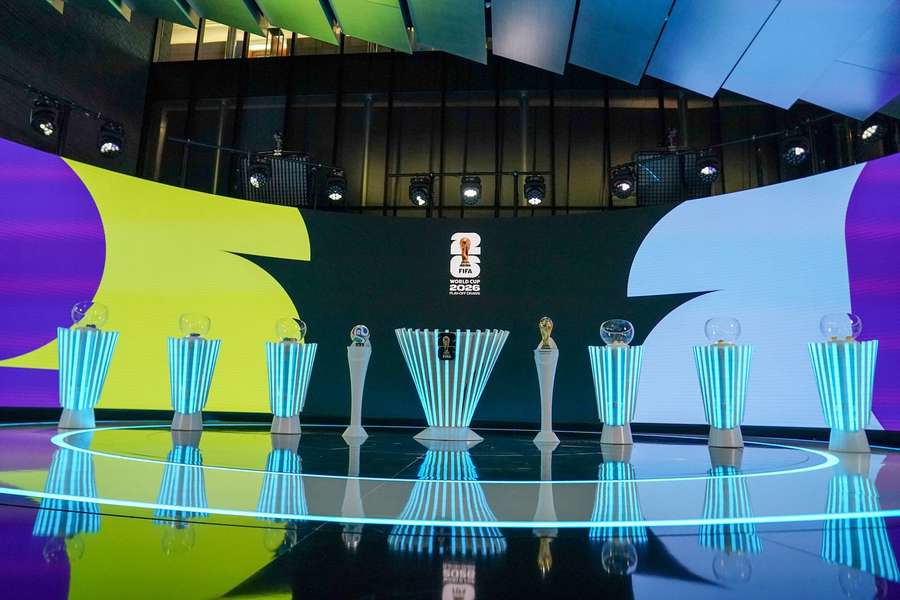While the original idea of three-nation groups was scrapped in favour of the traditional four-team format, it will still be a World Cup draw like no other, with it consisting of a record-breaking 48 nations.
This is everything you need to know about it.
When and where is the 2026 World Cup draw?
Date: December 5, 2025
Location: John F. Kennedy Center for the Performing Arts in Washington DC, USA
In Washington DC, it will be determined which of the twelve groups (A–L) each nation will compete in and which venues they'll play in. The full match schedule is expected to be released on December 6.
Which nations are in each pot?
The draw pots are, as usual, largely based on the FIFA World Ranking. However, the three host nations, the USA, Canada, and Mexico, are automatically placed in Pot 1, while the sides to win the playoffs will be placed in Pot 4 regardless of their ranking.
Pot 1: USA, Canada, Mexico, Spain, Argentina, France, England, Brazil, Portugal, Netherlands, Belgium, Germany
Pot 2: Croatia, Morocco, Colombia, Uruguay, Switzerland, Japan, Senegal, Iran, South Korea, Ecuador, Austria, Australia
Pot 3: Norway, Panama, Egypt, Algeria, Scotland, Paraguay, Tunisia, Ivory Coast, Uzbekistan, Qatar, Saudi Arabia, South Africa
Pot 4: Jordan, Cape Verde, Ghana, Curacao, Haiti, New Zealand, the four winners of the European Play-Offs, the two winners of the Inter-Confederation FIFA Play-Off Tournament
Click here for everything you need to know about the European Play-Offs
What are the rules for the draw?
FIFA will largely follow the established regulations, with a few adjustments due to the 48-team format.
No more than two European nations can be drawn into the same group, and no two non-European teams from the same continent can be placed in the same group.
The pots are emptied one after another, starting with the group seeds from Pot 1. If a team cannot be placed in a drawn group (for example, due to a confederation conflict), it will automatically be moved to the next available group.
In what is a new rule, FIFA has announced that the two highest-ranked teams in the world rankings, Spain and Argentina, can only meet in the final if both win their groups, as they will be placed on opposite sides of the bracket, similar to Grand Slam tennis tournaments. The same applies to France and England, who are ranked third and fourth.
Everything you need to know about the FIFA Play-Off Tournament
How will a 48-team World Cup work?
With the expansion to 48 teams, the structure of the World Cup changes fundamentally.
For the first time, there will be twelve groups of four teams each. The top two teams from each group, along with the eight best third-placed teams, will advance to the first knockout stage, a round of 32.
The vast geographic spread of the host nations also presents logistical challenges for teams and fans. The long distances between some venues could lead FIFA to cluster groups and match schedules more regionally to minimise travel.
The expanded field allows many more nations to participate, so the 2026 World Cup is a number of new teams, with Curacao, Cape Verde, Jordan, and Uzbekistan already confirmed as debutants.
You can find every qualified team here.
Will there be a Group of Death?
There may be more teams than ever, but that doesn't mean that the draw won't throw up a dreaded Group of Death.
Teams like Croatia, Morocco and Colombia are among the world’s elite, but due to their rankings, they end up in Pot 2. Meanwhile, Pot 3 also features tricky opponents in Norway and the Ivory Coast, while Ghana are lurking in Pot 4 and could be joined there by Italy.
As a result, even with only two European nations able to be drawn together, there could still be some extremely strong groups, such as:
- Argentina, Morocco, Norway, Italy
- Brazil, Japan, Ivory Coast, Denmark
- Spain, Uruguay, Saudi Arabia, Ghana



